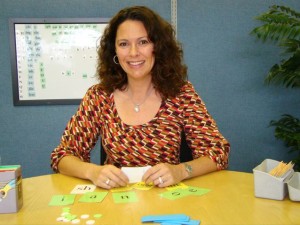
by PRIDE Reading Program Admin | Oct 14, 2015 | A PRIDE Post, Articles & Resources
In the children’s book Madeline, Nurse Clavel is lying in bed when she bolts upright in fright in the middle of the night and says, “Something is not right.”
She had the good sense to trust her intuition about a child in her care. Parents who suspect that something may not be right can trust their intuition and do well to follow Nurse Clavel’s example to get help.
A parent’s intuition is a reliable indicator of the existence of a learning difference or a disability, which interferes with a child’s ability to access the curriculum in school.
When a child is not doing well in school, there may be good reason for you to request an immediate assessment. Responsible parents always want to be certain the school is providing what is needed for their child to succeed in school. To know what is necessary, an assessment is the first thing to do in order to identify the issues to remedy.
What is an assessment?
An assessment is simply a standardized test performed by someone trained and licensed to understand how to give the test and how to interpret the results. The assessor will write a report. If the report indicates a need for special education services or accommodations, school staff and parents in a meeting will discuss the report’s findings.
Parents will receive notice of the meeting. It is called an IEP meeting. An Individual Education Plan designed to provide FAPE, a Free; the IEP team will design Appropriate Public Education. The document, which results from the IEP team meeting, is also called “The IEP.” The IEP is a contract between parents, who are the holders of a child’s educational rights, and the child’s school. There are many ways parents can affect an offer of FAPE, and among them is participating fully in the IEP process, and being certain that all areas of suspected disability are assessed and investigated — thoroughly, fairly and objectively.
How do you get an assessment?
You write a letter to the school and ask for one in a signed and dated letter, describing why you believe your child needs to be assessed.
Be brief, and describe what it is that makes you think an assessment should be performed. If you can, describe the possible disabilities, which prompted your writing: hearing, vision, learning difference, other health impairment, etc.
How is a learning disability remedied?
Students who have been assessed often require more educational services, accommodations, support and/or remediation than those provided to the general student population. These are called ‘special education services’ and Federal and State laws created special education as a civil right.
Are Special Education Services and Accommodations Really Special?
Imagine a pencil taped very high on the wall.
It is not within easy reach for people of average height.
People of average height must jump to reach the pencil and take it off the wall.
People who are very tall will easily extend an arm to reach the pencil and take it down.
People who are very short must stand on a chair to reach the pencil and take it down.
— That chair describes special education services and accommodations.
Here are some insights about our perceptions of those using the chair: The shortest people are no less worthy for needing the chair. The tallest people are no more worthy for not needing the chair. People are people — and some of us need the chair to reach the pencil. The chair levels the playing field.
One in five children have a learning disability, and these range from hardly noticeable to severe. With expert and targeted remedial help — and heaps of extra praise — children with learning disabilities can be taught appropriately and motivated to work extra hard to address their learning needs effectively.
How do you know whether an assessment is needed?
You look for signs and symptoms. A child with a learning disability, for example, will take in and process information differently and needs to be taught by specialists. Some people with learning differences also have another diagnosis, such as ADHD.
Effective early intervention is the key to succeeding in life! It can be a tremendous relief to you as a parent if you understand that success is not necessarily affected by learning differences if learning differences are remedied appropriately – so, the training needed must begin sooner rather than later for the best result. It is heartwarming to see the relief a child feels when their reading ability improves after struggling so long. Their self-esteem improves as their abilities improve.
Because early intervention is best, the sooner parents can identify a learning disability and complete the assessment process, the sooner a child can begin to be taught in a way that makes sense.
What method makes sense?
One that works! Forty percent of children in the United States have difficulties learning to read. Most of these children can learn to read at average grade levels if taught appropriately.
The most well-known and effective method for reading intervention is the Orton-Gillingham approach. With this approach, the teacher presents the building blocks of our language, vowels and consonants, one or two at a time, using a multisensory technique.
Here is an example of multisensory teaching: prompted by the letter ‘A’ on a flashcard, a student will say it’s name, say its sound, and ‘write’ the letter ‘A’ on their other palm using an inkless index finger. This technique uses sight, hearing, movement and touch.
Orton-Gillingham-trained teachers help students with dyslexia to progress because of the sequential, repetitive and systematic structure of the Orton-Gillingham approach. It is effective, thorough — but also slow. Unfortunately, due to the time requirements in public school classrooms, most teachers cannot incorporate this method into their daily curriculum.
But, you can’t remedy what you don’t thoroughly understand. Here are some indications that an assessment is needed for a learning disability. Other disabilities have other indications for which an assessment can be requested. See www.pridelearningcenter.com for more about learning disabilities.
- Choppy and labored reading
- Reading comprehension inconsistent with intelligence
- Words are omitted or lines of text are skipped over while reading
- Unusual spelling
- Disoriented handwriting
- Easily distracted
- Attention wanders and on-task focus disappears
- Labored writing
- Spatial disorientation
- May ignore margins completely
- May pack words or sentences too tightly on the page
- Disorganized
- Frustrated with expressive written and oral communication
- Doesn’t complete class work or homework on time
- Wrongly accused of being lazy, unmotivated, difficult or unintelligent
- Letter reversals
- Difficulty copying off the board
If, like Nurse Clavel, you find your intuition keeping you awake at night, look for indications that an assessment is needed. And get your child assessed!
About the Authors

Karina Richland, M.A. is the Founder of Pride Learning Centers, located in Los Angeles and Orange County. Ms. Richland is a reading and learning disability specialist. She speaks frequently to parents, teachers, and professionals on learning differences, and writes for several journals and publications. You can reach her by email at karina@pridelearningcenter.com
Learn more about the New PRIDE Reading Program

Nan, Waldman, Esq. is a special education and disabilities consultant in Los Angeles with 20 years of experience in the field. She is also a parent and primary caregiver of a child with disabilities, a teacher, an advocate and a lawyer. Nan Waldman, Esq. can be reached by email at n.waldman.esq@gmail.com

by PRIDE Reading Program Admin | Oct 3, 2015 | A PRIDE Post, Dyslexia
Dyslexia Facts
Dyslexia is a language-based learning disability and one of the most common causes of reading difficulties in elementary school children.
Approximately 1 out of every 5 children in the United States struggles with dyslexia!
Some problems displayed by students with dyslexia involve:
- Learning to speak
- Organizing written and spoken language
- Learning letters and their sounds
- Memorizing number facts
- Spelling
- Reading
- Learning a foreign language
Dyslexia is a life-long condition. With the proper help and early intervention, students with dyslexia can learn to read and write. Most children with dyslexia will need extra help from a teacher, tutor, or therapist specially trained in using a multisensory, structured language approach.
Multisensory teaching
The most effective teaching method for children with dyslexia is a multisensory approach. Multisensory teaching utilizes all the senses to relay information to the students. The teacher accesses the auditory, visual, and kinesthetic pathways in order to enhance memory and learning. For example, when learning the vowel combination “oa” the student might first look at it and then have to trace the letters in the air while speaking out loud. This combination of listening, looking, and moving around creates a lasting impression for the student as things will connect to each other and become memorable. Some other multisensory activities are:
- Fill an empty cookie sheet with flour or rice and let the child trace letters with their fingers. Shake the tin to start over.
- Fill a large resealable see-through bag with shaving foam. Close it tight and let the child use his or her finger to make letters in the foam.
- Make tactile letters – use glue to stencil letters onto paper or cardboard and cover them with sand or glitter.
- Make alphabet cookies using letter-shaped cookie cutters, or use the cookie cutters with play dough.
- Incorporate fun activities into the learning time. Games and other creative activities get the dyslexic child more involved in the learning process and it gives them a sense of accomplishment.
- Act it out! Dyslexic children are often very good actors and this gives them an opportunity to verbally express their knowledge and “shine.”
- Use objects and manipulatives when teaching. Dyslexics like to feel and touch the concept being taught. This could be as simple as a note card that they hold while reading out loud.
Time
Dyslexic students often struggle with focus and attention. They are easily distracted and often have a hard time listening to a long lecture or watching a long video. Dyslexic children may also struggle with short-term memory deficits, making it difficult to take notes or understand simple instructions.
- Go slowly. Do not rush through a lesson. Give the student time to copy anything written on the board (or remind them to take a picture with a phone). Make sure the dyslexic student understands you before moving forward to the next concept.
- Repeat yourself a lot. Dyslexics often struggle with short-term memory deficits; it is difficult for them to remember everything you said. Repeat instructions, keywords, and concepts so students are more likely to remember what you say, or have time to write it down.
- Give them short breaks often. Sitting and focusing for long periods of time is very difficult for dyslexic children. Move around from activity to activity.
- Give the dyslexic child more time. It takes dyslexic children longer to complete assignments other students may have no problem completing. Allow the dyslexic student more time to take exams and quizzes and to complete homework so they do not feel rushed.
- Time to process what he has heard
Handouts
Due to short-term memory deficits in dyslexic students, providing them with visual handouts is extremely beneficial to them.
- Use outlines for lectures
- Have the homework written on the whiteboard daily and remind them at the beginning or end of each class period to take a picture of it on their phones
- Use visual cues, such as asterisks and bullets to highlight important directives or information
- Have reference guides, multiplication charts, alphabet and number lines handy for them to use
Learn more about the New PRIDE Reading Program
___________________________________________________________________________
Karina Richland, M.A. is the Founder and Director of PRIDE Learning Centers, located in Los Angeles and Orange County. Ms. Richland is a certified reading and learning disability specialist. Ms. Richland speaks frequently to parents, teachers, and professionals on learning differences, and writes for several journals and publications. You can reach her by email at karina@pridelearningcenter.com or visit the PRIDE Learning Center website at: www.pridelearningcenter.com

by PRIDE Reading Program Admin | Sep 27, 2015 | A PRIDE Post, Dyslexia
October is National Dyslexia Awareness Month and PRIDE Learning Center will help raise awareness for dyslexia by offering FREE reading assessments throughout the month.
“One out of every ten children has some form of dyslexia,” says Karina Richland, owner of the dyslexia reading centers. “Reading and writing are very difficult for children with dyslexia and these really smart kids end up struggling so much in school.”
PRIDE Learning Center teaches kids with dyslexia how to read and write using a multisensory system called the Orton-Gillingham approach. It is an intensive one-on-one reading program that stresses teaching the entire structure of written English through systemized teaching of letters and their corresponding sounds.
“Most parents don’t even know this type of teaching exists,” says Richland. “This isn’t a brand new program either, the Orton-Gillingham approach to reading has been around since the 1940’s. It is amazing how structured and repetitious it is. Our kids reading skills improve 100% when they come here. It is hard work but we make it really fun and the kids just love coming here.”
Throughout the month of October, parents can bring their children into any local PRIDE Learning Center for a free assessment that will measure their reading abilities. PRIDE Learning Center has locations in Newport Beach, Mission Viejo and San Clemente. To schedule an appointment contact PRIDE Learning Center at 866-774-3342 or visit the website at www.pridelearningcenter.com.

by PRIDE Reading Program Admin | Jun 16, 2015 | A PRIDE Post, Reading Comprehension
For some children, reading comprehension help is just a frustrating, pointless exercise of reading words on a page. How can we help our children to become active, engaged and competent readers? This is not something that comes naturally to most children. It is something that needs to be taught and practiced. Here are a few strategies and techniques parents might use with their children for reading comprehension help.
Build Background Knowledge
The first step in reading comprehension help is connecting the child with the text. Before reading a text help the child build background knowledge. If the text is about the Himalayan Mountains, consider showing the child a visual representation of the terrain, landscape, etc. Ask them about the similarities and differences between the pictures they see and their own city and town. Building this background with information is critical in helping the children visualize what they are reading while they are reading it.
Teach the Student to Visualize as they Read
The next step in reading comprehension help is learning to visualize. During the reading, stop and ask the child questions relating to the reading. Ask them what did they see while they were reading and what did it look like, sound like, etc. By asking questions during the reading, you are giving the child a purpose for reading as well as focusing his or her attention on what they are reading.
Use Graphic Organizers
Another important element in reading comprehension help is using a multi-sensory approach. During the reading, have the child use a graphic organizer to help set the visualization of the text. For example, they could compare two characters from the story and decide how they are similar and different using their organizer. This keeps the child engaged and active, as well as gives them a purpose as they are reading through the text.
Discuss the Reading both Verbally and Written
Once the reading is complete, it is important for the parent to monitor the child to determine whether reinforcement is necessary. This can be accomplished through a variety of different activities – both orally and written.
• Create a story map with the child. Draw a vertical diagram with spaces for the child to fill in the names of the main characters, the story’s setting, and the main problem in the story, a few events, the resolution and the ending.
• Have the child retell the story or text in their own words.
• Write the words Who, What, Where, When, Why, and How on chart paper. Have the child answer these questions as they pertain to the story.
• Ask the child to draw parallels to what they have just read, and something they have read in the past.
A strong reader is not just someone who can read anything, read it fast and read it well. A strong reader is engaged and active in the reading. This reader therefore comprehends the text in many various skill levels. This is not something that usually comes naturally; this is something that needs to be taught. Motivate and guide your children through comprehension, make it fun, and make it lasting.
Learn more about the New PRIDE Reading Program
________________________________________________________________________________________________________________________

Karina Richland, M.A. is the Founder of PRIDE Learning Centers, located in Los Angeles and Orange County. Ms. Richland is a certified reading and learning disability specialist. Ms. Richland speaks frequently to parents, teachers, and professionals on learning differences, and writes for several journals and publications. You can visit the PRIDE Learning Center website at: www.pridelearningcenter.com

by PRIDE Reading Program Admin | Jun 15, 2015 | A PRIDE Post, Reading Skills, Summer Programs
Summer break is finally here! Although our kids deserve a vacation from the daily homework load – we don’t want to completely let their reading skills slip during this summer vacation. Here is a very family-friendly list of activities you can try at home this summer with your kids to keep the reading skills sharp and active in those kiddies:
- Cook with your kids. Cooking is a great way for the family to spend fun and educational time together. Reading food labels and recipes can help your children improve their reading skills and learn the meanings of unfamiliar words. You can also work up an appetite by reading a story about food. Then make and eat the food you read about.
- Listen to audio books in the car while traveling. Spending time listening to books strengthens listening, concentration and imagination skills in children. It also gives them an opportunity to improve vocabulary and language skills. Take your child’s iPod along on car trips or while you are running errands during the summer break.
- Take your child grocery shopping. Let your child carry the shopping list as you shop. They can read off the items you need. Label reading is also a great reading task for a child. You can have them look up the ingredients on the labels or ask them to research which breakfast cereal has the least amount of sugar in it.
- Play board games. Here is your opportunity to expand your child’s mind while also having fun and spending time together. Games like Scrabble, Boggle and other word games are great for challenging the minds of kids. Some games require reading for clues or reading directions.
- Read about your vacation destination before you go. Have your child read about your travel spots ahead of time and help plan the trip for you. If you go camping, explore the wildlife and scenery on-line.
- Pick your favorite author. Try to read all the books by a favorite author and list them on a chart. Then write a letter to the author. Most authors have their own websites with contact information, book titles, games and more.
- Visit a museum or zoo. There will be lots and lots of signs and descriptions to read which will encourage non-fiction reading vocabulary.
- Go to the library. Access all those wonderful library resources, including reading incentive programs and opportunities for volunteer work for older children.
- Plant a vegetable garden. Read books together about gardening. Read directions to plant seeds. Children can research online for growing tips and learning how to take care of their vegetables.
- Campfire Stories. Set up a tent in the backyard and have your children take turns reading campfire stories. Pick out some fun scary mysteries and don’t forget the s’mores.
- Don’t watch TV – read it! If it is available, have your child watch close captioned TV with the sound off. Not only builds reading skills but also builds empathy for those who are hearing impaired.
- Keep a summer scrapbook. Tape in souvenirs of your family’s summer activities such as pictures, ticket stubs, photos, etc. The kids can write captions and read them aloud as you look at the book together.
Learn more about the New PRIDE Reading Program
_______________________________________________________________

Karina Richland, M.A. is the Founder and Director of PRIDE Learning Centers, located in Los Angeles and Orange County. Ms. Richland is a certified reading and learning disability specialist. Ms. Richland speaks frequently to parents, teachers, and professionals on learning differences, and writes for several journals and publications. You can visit the Pride Learning Center website at: www.pridelearningcenter.com









